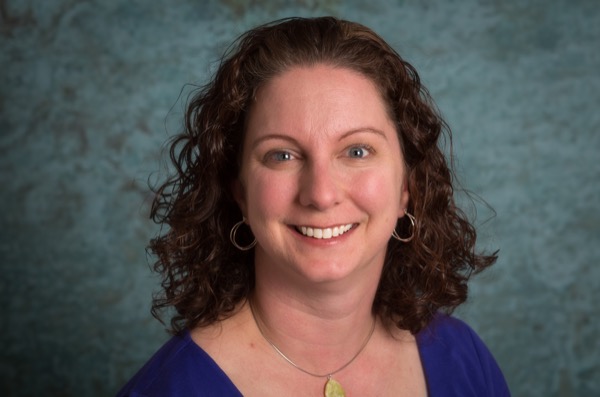
Microbial hotspots
Article details importance of methane seeps in microbial biodiversity of sea floor
3 p.m., March 16, 2015--The University of Delaware's Jennifer Biddle has co-authored an article detailing the important role methane seeps play in microbial biodiversity of the sea floor in the prestigious journal Proceedings of the National Academy of Sciences (PNAS) on March 16.
The article, “Global Dispersion and Local Diversification of the Methane Seep Microbiome,” provides evidence that methane seeps are island-like habitats that harbor distinct microbial communities unique from other seafloor ecosystems.
Research Stories
Chronic wounds
Prof. Heck's legacy
Methane seeps are natural gas leaks in the sea floor that emit methane into the water. Microorganisms that live on or near these seeps can use the methane as a food source, preventing the gas from collecting in the surrounding hydrosphere or migrating into the atmosphere.
“Marine environments are a potentially huge source for methane outputs to the atmosphere, but the surrounding microbes keep things in check by eating 75 percent of the methane before it gets to the atmosphere. These organisms are an important part of the underwater ecosystem, particularly as it relates to global gas cycles that are climate important in terms of greenhouse gas emissions,” said Biddle, an assistant professor of marine biosciences in the College of Earth, Ocean, and Environment.
Acquiring deep sea samples is difficult and often requires trips in research submersibles such as Alvin and Nautilus. As a result, the deep sea is often poorly understood and scientifically under sampled.
“Scientists know that certain areas of the deep sea experience bursts of energy and that microbes can grow there, but they aren’t sure what these microbes do or what environment they prefer,” Biddle said.
In the study, Biddle and her international colleagues analyzed microbial samples from 23 methane seeps across the globe, and compared them to the microbial communities of 54 other seafloor ecosystems, including sulfate-methane transition zones, hydrothermal vents, coastal sediments and deep sea surface and subsurface sediments.
The collaborating scientists used what Biddle called “samples of opportunity” — valuable samples on-hand in laboratory freezers from their previous research trips and those contributed from other colleagues they enlisted to help. The samples came from as close as the White Oak River Basin estuary in North Carolina and as far away as an extinct seep offshore Antarctica.
While the researchers theorized that bacteria and archaea would vary by the amount of methane emitted by a given seep, what they found was that methane secretion wasn’t a determining factor; rather other energy sources from the surrounding environment were determined to have a greater role in determining what types of bacteria and microorganisms were present.
The scientists’ findings indicate that, globally, methane seeps share a core community of bacteria and archaea, but that they are locally specific.
Biddle likened it to Darwin’s expedition through the Galapagos Islands in the early 1800s, explaining that while Darwin noted that finches were present on every island he visited in the Galapagos Islands, he reported that the finches were individually different based on the island they were on.
“We found similar groups, but we did not find any one species that was distributed throughout the entire deep sea in all of these environments. This is significant because it tells us that our job is even more difficult than we thought,” she said.
As governments and industry contemplate mining the deep ocean as a potential industrial reserve for minerals and other important deposits, scientists like Biddle are considering climate change and how the warming of the ocean potentially could affect the deep water and the marine organisms that live there.
Biddle believes the data set created with her colleagues may offer an important window into understanding the current state of diversity and dispersal in the deep sea. This is particularly important, she said, because consumption of methane by microbes is an important control for methane concentrations from the seafloor.
“This collection of data is rare and valuable,” Biddle said. “As the climate warms, changes are bound to occur. Without an initial data set there is no way to measure changes over time.”
Recent local sea floor mapping efforts by the National Oceanic Atmospheric Administration have led to discovery of new seeps up and down the Chesapeake Bay and Atlantic coast.
“It’s an environment where there is a lot of discovery, new seeps are constantly found. It’s intriguing to think we’ve now got reason to keep studying new seeps, determine how they are different and begin asking new questions” Biddle said.
Co-authors on the paper include Emil Ruff, the paper’s lead author, from HGF MPG Group for Deep Sea Ecology and Technology and Department of Molecular Ecology at Max Planck Institute for Marine Microbiology; and colleagues from University of North Carolina, Chapel Hill; Helmholtz Center for Polar and Marine Research, Bremerhaven, Germany; and University of Bremen, Bremen, Germany.
About the professor
Jennifer Biddle joined the University’s School of Marine Science and Policy in 2010, after completing a postdoctoral fellowship funded by NASA’s Astrobiology Institute at the University of North Carolina at Chapel Hill. She earned bachelor’s degree in biotechnology with honors from Rutgers University and a doctoral degree in biochemistry from Pennsylvania State University. Prior to joining UD, Biddle held a postdoctoral position in Penn State’s Department of Geosciences.
Her work has been published in Nature and has been funded by the National Science Foundation, Delaware Sea Grant and the Center for Dark Energy Biosphere Investigations, among others.
As a 2013-14 Distinguished Lecturer with the U.S. Science Support Program, Biddle visited nine institutions throughout the United States to discuss deep-ocean drilling science and her work on microorganisms living deep within marine sediment.
Article by Karen B. Roberts
Photo by Ambre Alexander Payne








